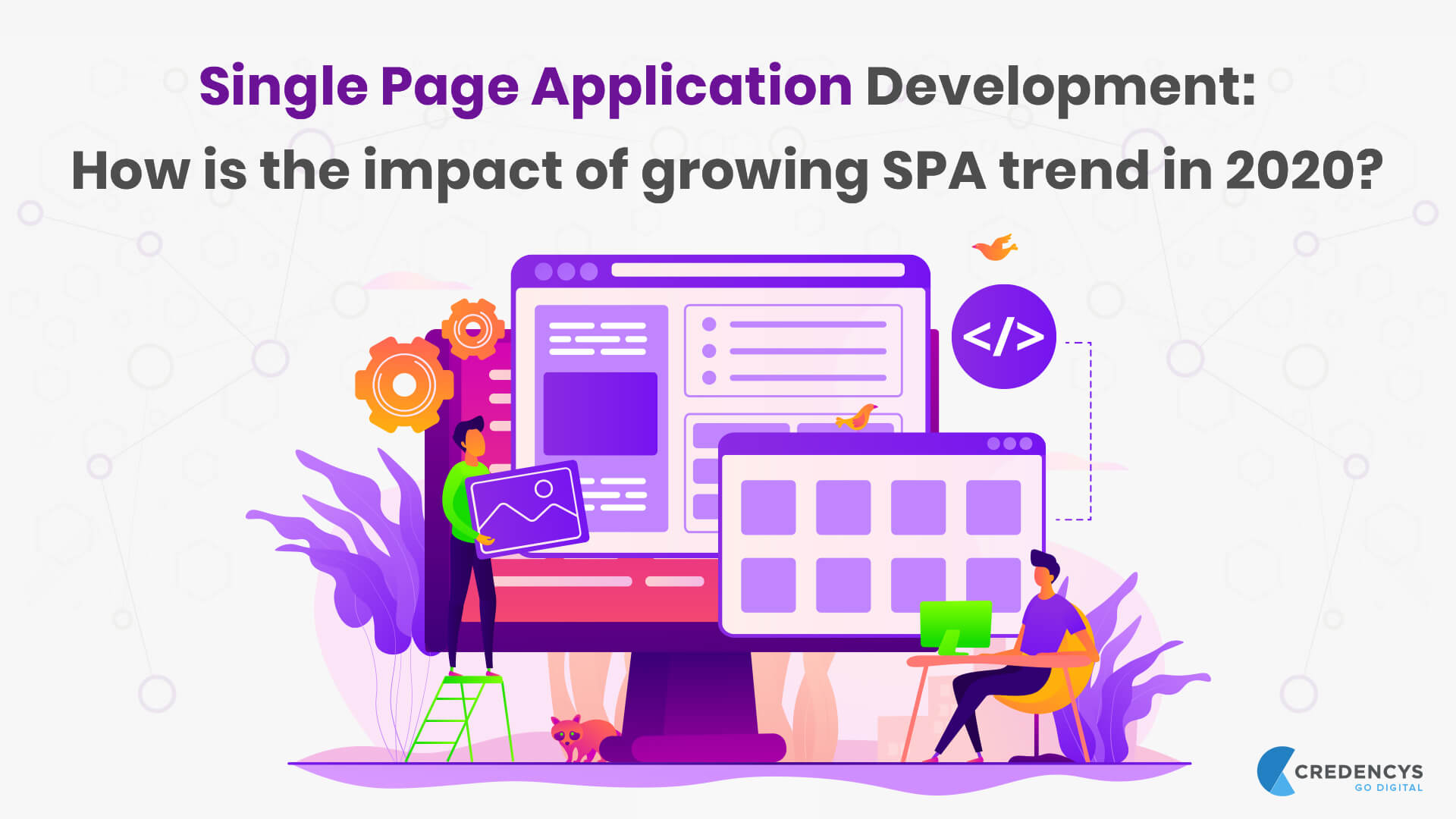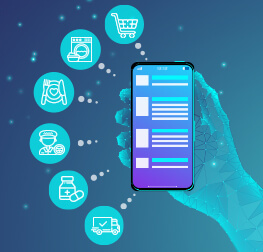Single Page Application Development: How is the impact of growing SPA trend in 2023?
Single page application development (SPA development) is one of the latest trends in mobile app development and turns out to be a unique technique for website design that helps in faster load time of a webpage. It especially works perfectly on a smart device and gives a convincing user experience by displaying the webpage parallel to how it appears on the desktop version of the website. It supports in, overcoming slow page loading problems with websites and preventing revenue loss due to the same cause.
Even a second delay can vary you from your competitor among your target customers. In that manner, a single page application ensures active and immediate webpage responses and improves customer experience.
How do you if your website is fast and how it is measured?
In a survey conducted by BankMyCell, it has been stated that out of 43% of the world’s population that owns a smartphone, do not even wait for more than a minute for your webpage to load and open. If your website is not opening fast, then it gives an opportunity for your competitors to occupy your place.
Later it does not matter even if you rank first on Google but your website is receiving a huge bounce rate. Google recommends the download time of an app should be fewer than two seconds and the webpage responsive time should be less than 100 milliseconds.
You have seen the positive part of the SPA and how it helps in speeding up the webpage loading speed. But there are cases where developers do not prefer developing apps based on single page applications due to its own reasons. Your website may be exposed to potential threats that hit not only the developer-end but also the client-end. Also, sometimes, changing a website built on a single page application from scratch is quite difficult, even though you are allowed to use front-end microservices that could help avoid such issues.
What is Single Page Application and what are its benefits?
If you know what a one-page website is, then SPA also works in the same manner, where a one-page website is for desktop websites and SPA development is for mobile devices, such as Android and iOS.
Single page application quickly narrows down your website in one single page by optimizing web pages. It is called a website format that contains the entire website in a single HTML file with appealing web appearance and functionality while viewing in a browser and is encoded using JavaScript. Gmail, GitHub, Google Drive, Facebook, etc. are some SPA, to name a few. Rendition and web management are two processes performed on the client-side after which the application code is loaded into it.
Multiple page applications (MPAs) follow the traditional website design that comprises multiple HTML files integrated with a hierarchical structure and are then transferred/communicated from an internal server, whereas SPAs contrast with MPAs in terms of their functionality and efficiency.
Moreover, MPAs occupy space of 1.3MB to 2.5MB content on average, and thus the time required to download files on a mobile app is elongated by mobile phone CPUs, and sometimes slower than browsers used on desktops. Also, if there are any graphics feed data in the mobile app, then again it may consume time to load or can perform well when connected to Wi-Fi.
Benefits of Single Page Application Development
- A mobile app, built using a single page application, provides user seamless experience to the webpage with simple layouts, compatible and readable format according to mobile screen sizes and resolutions, easy navigation, by keeping data transfer between browser and server to the least minimum case.
- By using one HTML file for the entire website, the content part also stays in one single file at the client-side. This fosters quick webpage load times, eases the webpage navigation and avoids page hopping that may consume time.
- SPA-based websites generate more traffic on social media because of carrying a small number of files to load. Also, debugging and upgrading becomes easy with nimble load times, particularly if you are using Chrome’s Inspection function.
- Developers find working on single page application websites interesting and innovative, as the SPA format allows them to improve the website’s application programming interface. Due to the involvement of JavaScript frameworks in the SPA-formatted websites, data can access and protected on multiple devices when you are offline, without interrupting work production wherever and whenever as per the user convenience. For example, Google Drive and Gmail work using the same technique.
When and where SPAs can go wrong?
- Single-page applications cannot run without JavaScript both enabled and installed. Though it is well-known for delivering appealing websites, if something goes wrong with JavaScript, then there is no other crippled website than yours.
- SPA-formatted websites may not allow you to operate features such as search functions, user input, and data retention.
- Because of its generation method the search engines may not count your website, and the server does not refresh when the website is updated automatically.
- Sometimes, when script programs fail to delete the unwanted information from the database, it leads to memory leaks and by default, the device slows down within. SPA cannot handle both memory leaks and cross-site scripting attacks (a suspicious code that hacks the SPA’s standard coding on the client-side). The severity of these two problems is huge and sometimes, it may end up revamping the website from scratch.
Best frameworks for developing single-page applications
As single page applications work only on JavaScript, you can make use of the following frameworks for successful implementation and development of a SPA-based website.
- Single page application React
- AngularJS
- BackboneJS
- Ember
- Meteor
- Polymer
- Dojo
- Knockout
Conclusion:
Although there are certain flaws in using single page application, still the trend of single page application development has been showing a great impact on optimizing websites for user convenience and real-time experience. Despite factors such as anti-virus protection and visibility to search engines, the SPA is a good technology to implement that attracts users explicitly.
Frequently asked questions on Single Page Application Development
1. Can I have only one version of frameworks such as React, Angular, etc?
Yes, it is suggested to stick on to one version of any framework that you have chosen. First, you should have a recommended setup according to the website development requirement and then you have to configure the import map so that your library is defined only one time. So set your SPA environment as to how you define your libraries but be careful and preventive about the effect that falls on user’s bundle sizes and application speed.
2. What is the best way to share the application state between applications?
Usually, sharing application state among applications is not suggested because there are high chances that all apps are coupled together. With effective designing and setting up boundaries at the beginning of your application development, the possibility of sharing the application state becomes less. Anyhow, there are a few ways where you can make it possible as well.
- a) Generate a shared API request library that can pile requests and related responses. If someone hits the API request, then the API which is hit is hit again by another app, it uses only the cache files and responses.
- b) Set the shared state as an export so that other libraries can import it. This lets libraries stream new values to their subscribers.
- c) Always communicate using custom browser events.
- d) Read or store the state by using cookies, local/session storage for items that do not keep changing often such as login credentials.
3. Can I use more than one framework?
Yes, you can use more than one framework, but keep in mind that it may split your front-end organization into specialties, which may not be compatible and pushes more codes to your users, which makes them feel uncomfortable when using your webpage. However, using multiple frameworks keeps unwanted or older libraries away by increasing upload speed by removing old library codes in the application.
4. Which is better to use – Single page applications or Multiple page applications?
If you are trying to build a desktop-based with multiple pages created and transform the digital view of the same into mobile technology, then multiple page application is useful. But you also need to remember that multiple page applications may not help you in the speed of webpage loading in both web format and on the mobile format because it carries multiple HTML files for even a single page. Whereas in case of single page application, you will have only one HTML file for the complete website and it increases the webpage upload and download speed compared to multiple page applications.
But every application has its own benefits and disadvantages as mentioned in this blog previously. If your requirement is huge and you look at the website protection point of view, then a single page application may not be a wise choice. Maybe, you can develop a site with a single page application and later can change it according to user experiences and preferences.








Tags: